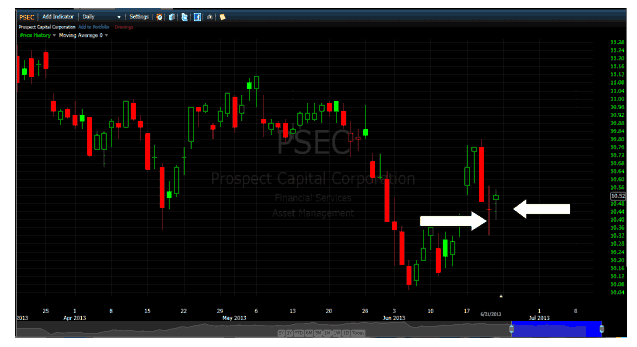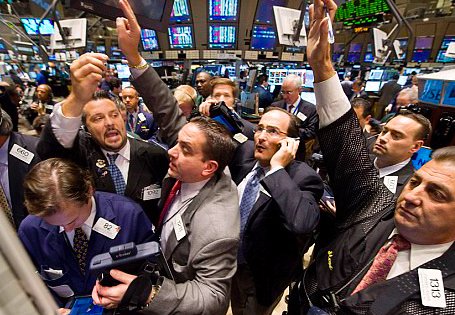By Steve Sosnick, Chief Strategist at Interactive Brokers
Humans have biases. One of them is a fascination with round numbers. Because markets are a manifestation of mass psychology, it is not surprising when a financial instrument or index becomes fixated on a round number as one approaches. In my opinion, currently there are several to attract the market’s focus: $50,000, 30,000, 4,000, 20 and 1.25%
The big news recently – one that triggered an alert on my phone – was that bitcoin crossed the $50,000 level. It didn’t last long (at least on the first pass), but it was sufficient to further engross investors who had been eyeing the cryptocurrency’s spectacular rise.
I discussed this topic in an Asian radio interview this week, and said that a rise to 50k seemed inevitable. Investors are fascinated with bitcoin, and perhaps the best stock promoter the world has ever seen is a public and vocal advocate.
Speculative Fervor
But I don’t draw any real conclusions from a given number in bitcoin – only that it is a barometer for the level of speculation in the financial system. There is a speculative fervor in this product, and $50,000 was merely the next milestone.

Of a similar nature, the S&P 500 Index (SPX) is approaching 4,000. With that figure less than 1.5% away, it also appears to be an inevitability. I suspect that I will get another alert on my phone in the coming days. Similar to this morning’s bitcoin alert, it is more about becoming another milestone of the risk-on nature of most financial markets rather than a meaningful achievement in its own right.
Two numbers that are tied tightly to SPX are the 20 level of VIX and the 1.25% yield on the 10 year Treasury note. As part of the last minute buy program that pushed a flat market higher in the last 20 minutes of last week’s trading day, VIX slipped below 20. This didn’t trigger an alert on my phone, but I saw highlighted headlines come across my news services.
I personally don’t ascribe much meaning to a specific level of one particular volatility measure, but I have heard numerous portfolio managers claim that they are looking for a sub-20 VIX as further affirmation of the bull market.
VIX Gyrations
That said, none are options people and I can’t imagine that they’re not already largely invested, but if I take them at their word, at least some will use the declining VIX as a reason to put more money into the markets. With VIX bouncing by about 10% one morning this week, it seems clearer that the dip was more about short-term trading ahead of a long weekend than a meaningful move.
The move in the 10-year has a bit more significance. As with many round numbers, the 1.25% yield has no particular relevance, except that it has been part of a steady move higher for rates.
The 1% level was believed by many to be an area when the Federal Reserve might step in to suppress rates, but that was not the case. We last tested the 1% level at the end of January and rates continued to rise as inflationary fears began to creep into the market’s psyche.
I don’t believe that the Fed is concerned with relatively small rises in long-term rates, especially when they reflect the very inflation that the Fed is trying desperately to stoke. Also, from a practical viewpoint, what’s an extra 25 basis points over the course of 10 years?
Lessons Learned
I came into the markets ahead of the 1987 crash, and those lessons are burned into my mind. One was that interest rates can rise substantially before affecting the stock market. One of my tasks as a Salomon Brothers trainee was to track major measures of bond and stock markets.
The bond traders were miserable in 1987. They were in the midst of a horrible bear market in rates, and were becoming envious of the stock traders whom they looked down upon – literally as well as figuratively (bonds were on the higher floor).
That of course changed abruptly in October, when stocks plunged, leading the Fed to intervene to preserve systemic liquidity, and causing rates to plunge as well. The lesson for the current markets is not to fixate too heavily on a rise in rates. Eventually it could have an effect, but that could also take a long time.
Those lessons lead me to the final number I mentioned in the headline, 30,000. Japan’s Nikkei Index crossed that level at the start of this week, which is a huge milestone for that market. Yet this was not an all-time high. Not even close, actually.
Takeaway
This index recouped a level last seen in 1990 – over 30 years ago! The takeaways here are crucially relevant for traders. It can take a market a generation to recapture a bull market’s highs. It also shows that low interest rates and an accommodative central bank are not sufficient reasons for a market to rally. Interest rates in Japan have been near zero for decades, yet the bull market was not fully rekindled until recently.
We are in the midst of a phenomenal investing climate. So were Japanese investors in the late ‘80s. How long will investors be able to enjoy the current climate, and how much might a change in that climate cause lasting damage?
This article first appeared on Feb. 19 on Traders’ Insight.
Photo Credit: thenails via Flickr Creative Commons
DISCLOSURE: INTERACTIVE BROKERS
The analysis in this material is provided for information only and is not and should not be construed as an offer to sell or the solicitation of an offer to buy any security. To the extent that this material discusses general market activity, industry or sector trends or other broad-based economic or political conditions, it should not be construed as research or investment advice. To the extent that it includes references to specific securities, commodities, currencies, or other instruments, those references do not constitute a recommendation by IBKR to buy, sell or hold such investments. This material does not and is not intended to take into account the particular financial conditions, investment objectives or requirements of individual customers. Before acting on this material, you should consider whether it is suitable for your particular circumstances and, as necessary, seek professional advice.
DISCLOSURE: BITCOIN FUTURES
Trading in Bitcoin futures is especially risky and is only for clients with a high risk tolerance and the financial ability to sustain losses. More information about the risk of trading bitcoin products can be found on the IBKR website. If you’re new to bitcoin, or futures in general please visit CME Bitcoin Futures.
DISCLOSURE: OPTIONS TRADING
Options involve risk and are not suitable for all investors. For more information read the Characteristics and Risks of Standardized Options, also known as the options disclosure document (ODD). To receive a copy of the ODD call 312-542-6901 or copy and paste this link into your browser:



